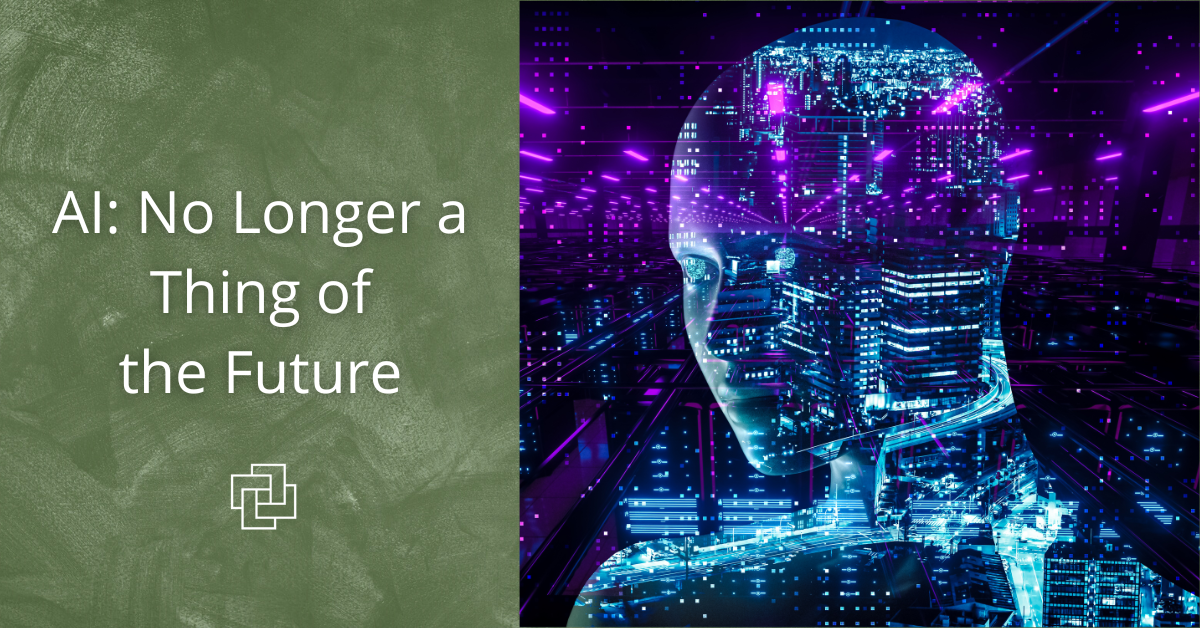
Let’s talk about one of the hottest topics presently dominating the news so far this year; Artificial Intelligence (AI).
Artificial Intelligence (AI) refers to the ability of machines or computer programs to perform tasks that typically require human intelligence, such as perception, reasoning, learning, problem-solving, and decision-making. AI algorithms are designed to analyze data, recognize patterns, and make predictions or decisions based on that data, without being explicitly programmed to do so. AI technology is rapidly evolving and has a wide range of applications in various industries, including healthcare, finance, transportation, and manufacturing, among others. Examples of AI applications include chatbots, image recognition, natural language processing, autonomous vehicles, and recommendation systems.
To be effective, AI systems must be able to process and extract insights from massive datasets, and they must also be able to adapt to new and evolving data sources over time. The amount of information available on the internet is growing exponentially, and it’s estimated that the amount of data generated every day will continue to increase in the coming years. This is due to a combination of factors, including the increasing number of internet users, the proliferation of connected devices and sensors, and the growth of social media and online content.
According to estimates, the amount of digital data in the world was around 33 zettabytes (33 trillion gigabytes) in 2018, and this is expected to grow to 175 zettabytes by 2025; a fivefold increase. The amount of information available online is indeed vast and expanding rapidly, and this presents both opportunities and challenges for AI algorithms that are designed to analyze and make sense of this data.
The focus for consideration here will be in;
ANALYZING
AI algorithms analyze data by processing and learning from large datasets using mathematical and statistical methods. However, there are some common approaches that AI algorithms use to analyze data, including:
DEVELOPMENT
The first physical inception of AI was in 1950. The Turing Test was proposed by mathematician and computer scientist Alan Turing. The test involved a human evaluator who engaged in a Natural Language conversation with a machine and a human participant, without knowing which is which. If the machine could convincingly simulate human-like responses, it is said to have passed the Turing Test.
Some recent examples that many are familiar with are robotics, autonomous vehicles, intelligent personal assistants, Siri, and Alexa. These technologies are rapidly evolving and have the potential to transform many industries, from healthcare to finance to transportation.
Today AI has evolved in such a way that it has enabled breakthroughs in areas such as image recognition, speech recognition, and natural language processing. All of this has led to the development of AI systems that can recognize and respond to human speech, generate natural language, and even create art.
However, nothing is perfect as it evolves. There are still many challenges that AI must overcome. Ensuring the ethical and responsible use of AI, improving its interpretability and transparency, and addressing concerns about potential job displacement and inequality of its actions.
CONCERNS
AI has the potential to bring many benefits to society, but it also has some pitfalls that might be considered:
Overall, it is important to address these and other pitfalls of AI to ensure that this powerful technology is used for the benefit of society. This requires ongoing research, a collaboration between different stakeholders, and a commitment to ethical principles.
Just as in the early 90s, the concept of the Internet was misunderstood, AI is presently at the same crossroads. To really understand it, one must use it, be involved with it, and experience its outcomes; just as society has done with the Internet over the past 30 years. It may take us 30 years to realize AI’s value but along the way, there will be those ever-present nefarious characters. However, with the speed of information and the awareness and experience that technology plays in our everyday lives, we may be more aware, educated, and critical as to how we allow AI into our lives potentially leading to a more efficient and safe use thereof.
Finally, AI was used to create 90% of this writing. The AI program that was used is ChatGPT. An online Chatbot that is free to everyone (openai.com) and is based upon a type of Natural Language Processing AI that uses a Deep Learning model called Generative Pre-trained Transformer (GPT).
Tracking #418793